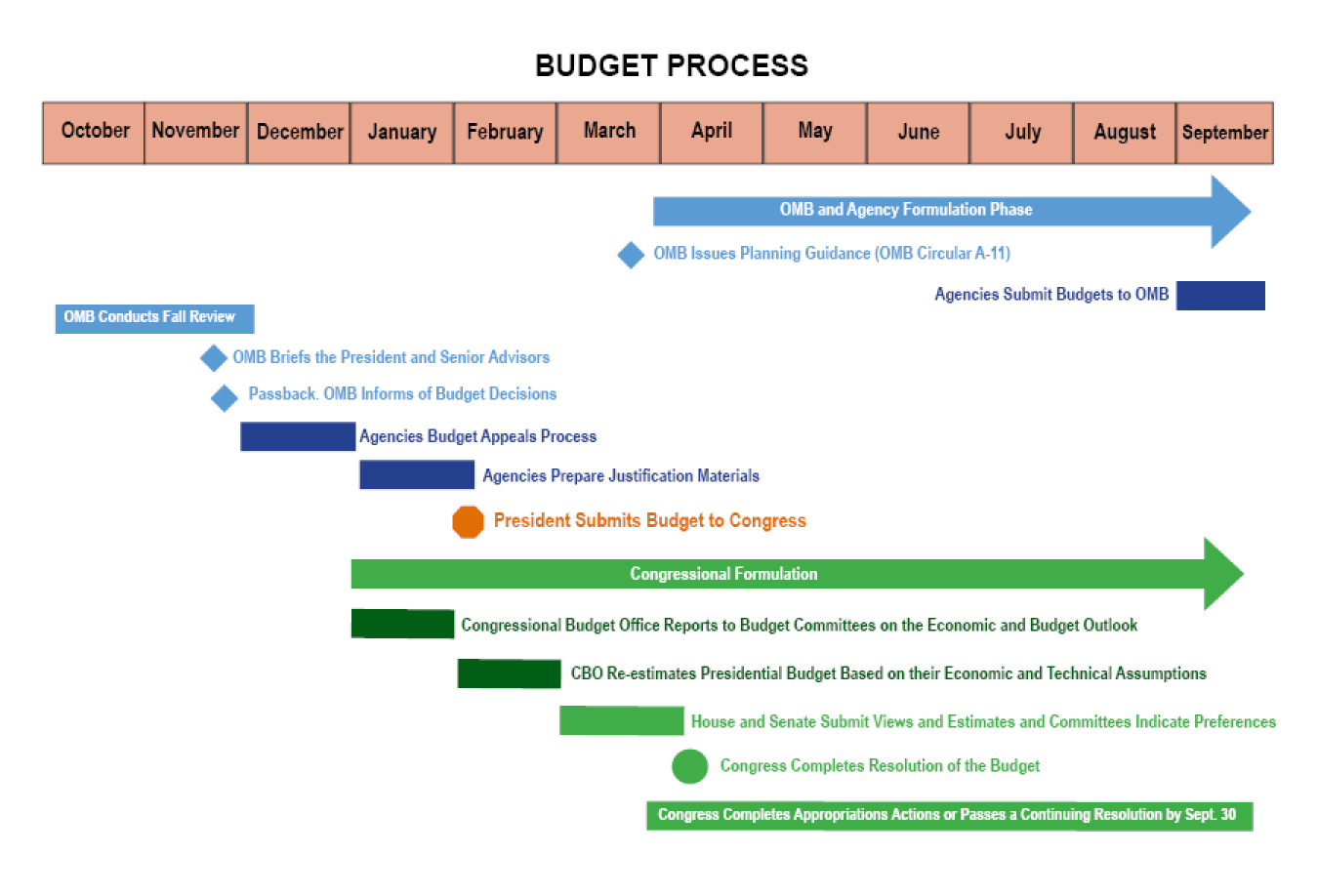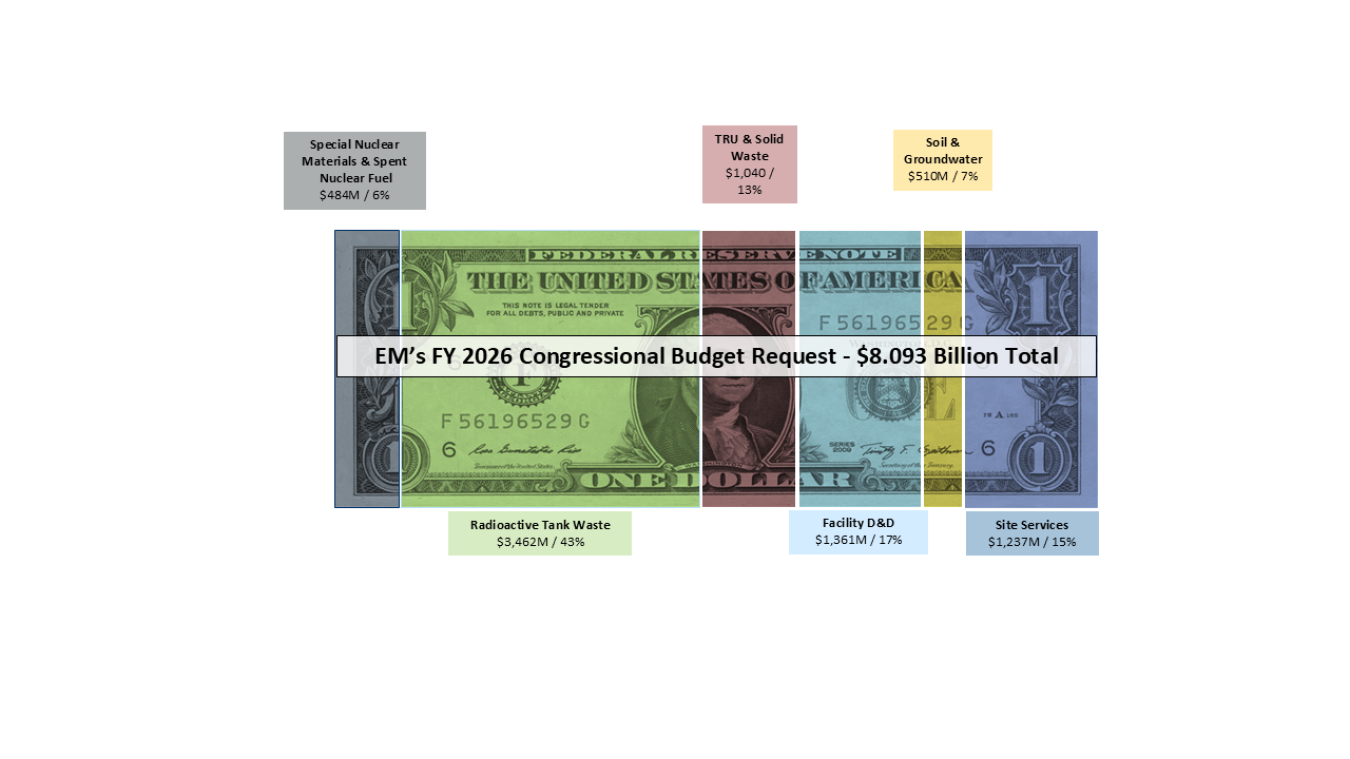THE BUDGET & PLANNING OFFICE
The Budget & Planning Office manages, integrates and coordinates planning and budget support for the Department of Energy’s Office of Environmental Management (EM). This office also aims to reduce the life-cycle costs of projects and accelerate the cleanup of the Cold War environmental legacy safely, efficiently and cost-effectively.
MAJOR RESPONSIBILITIES
* Delivers required budget documents three times a year to the Chief Financial Officer (CFO) the Office of Management and Budget (OMB) and Congress. This includes key information to support the budget justification.
* Serves as the intermediary between CFO, OMB, Congress, our field site offices and other stakeholders on all budgetary matters.
* Develops program planning and budget formulation guidance, including strategy development, assumptions for future spending and use of performance measures to assess program effectiveness.
* Evaluates overall EM budget procedures and processes and uses innovative enhancements and upgrades to improve efficiency and effectiveness.
The EM Fiscal Year 2026 President’s Budget Request will provide the resources to maintain a safe and secure posture in the EM complex, and to continue moving forward with the country’s largest nuclear cleanup.
BUDGET AND PERFORMANCE
EM provides an opportunity for public participation in the federal budget process. The budget request is initially formulated in the program offices, where EM considers public comments in developing the program strategies, priorities and funding requests. Those priorities are reflected in the budget that is submitted to Congress.

The way Congress develops tax and spending legislation is guided by a set of specific procedures laid out in the Congressional Budget Act of 1974. The centerpiece of the Budget Act is the requirement that Congress each year develop a "budget resolution" setting aggregate limits on spending and targets for federal revenue. The limits set by the budget resolution, along with a companion "pay-as-you-go" rule, apply to all tax or spending legislation developed by individual committees as well as to any amendments offered on the House or Senate floor.
MEASURING PERFORMANCE
The Department of Energy uses corporate performance measures to assess whether it is meeting its cleanup mission. EM assigns specific measures to each site that are tailored to the unique nature and scope of each area’s contamination and cleanup work. Progress against these measures at a specific site is a confirmable indication of progress towards EM’s cleanup goals. Completion of all of the corporate performance measures result in completion of that site.
EM, Congress and the public routinely monitor and evaluate cleanup progress using corporate performance measures throughout the year. These quantitative indicators focus on the effectiveness of risk-reducing actions that lead to completion of site cleanup. Each cleanup process must be consistent with each site’s individual baseline and milestones. The corporate (i.e., relating to the entire DOE-EM complex) measures are tracked in the context of the total measure (life-cycle) necessary to complete cleanup of each site, as well as the EM program as a whole.
EM annual performance results can be found in the Department of Energy Annual Performance Reports.
Congressional Testimony
-
Written testimony of Roger Jarrell, Principal Deputy Assistant Secretary for the Office of Environmental Management on FY 2026 budget request - May 20, 2025May 20, 2025
-
Testimony of Ike White, Senior Advisor for the Office of Environmental Management on to examine DOE's atomic energy defense activities and Department of Defense nuclear weapons programs in review of the Defense Authorization Request for FY'25 and the Future Years Defense Program - May 22, 2024May 22, 2024
-
Written Statement of William “Ike” White Senior Advisor for the Office of Environmental Management Before the Subcommittee on Strategic Forces Committee on Armed Services United States SenateApril 18, 2023
-
Statement of Ike White Senior Advisor for the EM Program for the Under Secretary of Science Before the U.S. House Committee on Appropriations EnergyMarch 11, 2020
-
Written Statement of Anne Marie White Assistant Secretary for EM Before the Subcommittee on Strategic Forces Committee on Armed Services US SenateMay 8, 2019
-
Written Statement of Anne Marie White Assistant Secretary for Environmental Management Before the Subcommittee on Oversight & InvestigationsMay 1, 2019
-
Written Statement of Anne Marie White Assistant Secretary for EM Before the Subcommittee on Strategic Forces Committee on Armed ServicesApril 9, 2019
-
Written Statement of James Owendoff Principal Deputy Assistant Secretary for Environmental Management Before the Subcommittee on Strategic Forces ComMarch 22, 2018
-
Written Statement of James Owendoff Principal Deputy Assistant Secretary for Environmental Management Before the SubcommitteeMarch 14, 2018
-
Opening Statement Anne Marie White Nomination Hearing United State Senate Committee on Armed ServicesMarch 1, 2018


